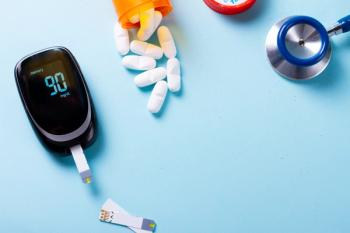
The Effects of COVID-19 and Telemedicine in Diabetic Pediatric Population
Lockdown orders impacted how diabetes care was provided for new onset T1D.
The COVID-19 pandemic created significant challenges in diabetes management, including an increase in the number of pediatric patients presenting with new-onset diabetes and more severe diabetic ketoacidosis, according to an article published in Pediatric Clinics of North America.1
Because diabetes can increase morbidity associated with COVID-19 infection, there have been concerns in the health care community about children with T1D and diabetes. A study of pediatric patients conducted in Italy examined data from children diagnosed with new-onset type 1 diabetes (T1D) or established patients with T1D presenting with DKA.
Patients with T1D presenting with DKA were evaluated during 2 time periods: February 2019 to April 2019, and February 2020 to April 2020. In 2020, there were 160 newly diagnosed patients, compared with 208 patients in 2019.
Overall, the researchers concluded that children and adolescents with both T1D and COVID-19 had a similar disease course children with COVID-19 without diabetes. “Taken together, these studies show that most pediatric patients with T1D do not become severely ill with COVID-19, unlike adults with diabetes and COVID-19,” the author of the current article wrote.
The article author also evaluated reasons behind the decrease in T1D diagnosis, but the higher number of patients with severe DKA, who were diagnosed during the pandemic, including lockdown restrictions enacted during the pandemic that decreased exposure to seasonal viruses—associated with new-onset T1D—and hesitance in seeking medical care early after illness onset due to fear of COVID-19 exposure.
Other published studies emphasized the impact of the pandemic on routine care at clinics and acute care in emergency room, which also contributed to a delay in diabetes diagnosis, which then caused more severe DKA cases reported in children during the pandemic.
Therefore, the use of telemedicine together with remote monitoring of diabetes during the COVID-19 pandemic showed positive changes in metrics that directly impact glycemic control. Telemedicine was successfully used to provide ongoing care for pediatric patients with diabetes, researchers report.
Lessons learned about management of diabetes during the COVID-19 pandemic should help to provide better care for pediatric patients with T1D and improve their health outcomes.
”During the COVID-19 pandemic pediatric patients with new-onset diabetes presented with more severe DKA,” the author concluded. “Most pediatric patients with a history of T1D who developed COVID-19 had mild disease or were asymptomatic similar to their peers without diabetes.”
Reference
1. Buggs-Saxton C. Care of pediatric patients with diabetes during the coronavirus disease 2019 (COVID-19) pandemic. Pediatr Clin North Am. 2021;68(5):1093-1101. doi:10.1016/j.pcl.2021.05.014
Newsletter
Pharmacy practice is always changing. Stay ahead of the curve with the Drug Topics newsletter and get the latest drug information, industry trends, and patient care tips.




































































































































